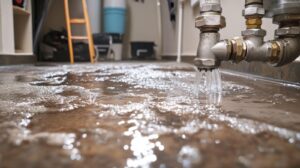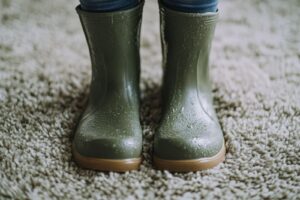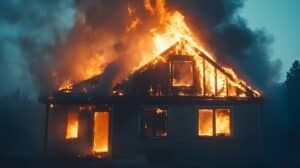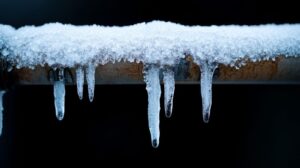When it comes to grasping the lasting impact of water damage on indoor air quality, it’s all about diving into the nitty-gritty of cleanup and total restoration.
Long-term water damage has far-reaching consequences beyond visible structural damage. One of the most critical yet often overlooked aspects is its impact on indoor air quality. The long-term effects of water damage pose significant health risks and structural deterioration if not addressed hastily. This article covers everything you need to know about long-term water damage and air quality so you’re prepared to respond quickly when disaster strikes.
- Black water
Black water is one of the most perilous types of water damage to encounter. Black water is wastewater containing fecal matter, urine, and other bodily wastes. This nasty concoction can seep into your home from outside flooding or a sewage backup.
Black water isn’t merely dirty; it’s downright dangerous. It’s highly contaminated and poses significant health risks due to pathogens, bacteria, viruses, and parasites. Plus, harmful chemicals and toxins are swimming around, too.
When black water infiltrates your home, it brings along airborne endotoxins — essentially, tiny bacteria particles that cause serious respiratory issues and other health concerns. Contact a certified biohazard technician to eliminate black water in your house for proper cleanup and total restoration.
- Airborne contaminants
Since water is a universal solvent, it has the knack for seeping into every unsuspecting nook and cranny of your home. If it wreaks havoc, it will mess with almost anything it touches, from glue and paint to carpets and more. These damaged materials start releasing some not-so-pleasant chemicals directly into your living space.
Solvents and volatile chemical compounds are other effects of water damage. A moist indoor environment promotes the virus growth, bacteria, and other germs, turning your home’s air into a contamination zone.
- Mold growth
Mold only requires a few ingredients to flourish: food, moisture, and mild to warm temperatures. When these elements come together, mold spores floating in the air seize the opportunity to spread, thanks to water damage effects.
When we talk about mold’s food supply, it’s essentially anything organic that it can sink its microscopic teeth into. We’re talking about dust, books, papers, animal hair — you name it. Solid materials like wood, particle board, paint, and carpet aren’t safe from mold’s appetite.
Above all else, mold loves moist environments. Mold thrives in wet environments caused by flooding, pipe leaks, leaky roofs, moisture in walls, excessive interior humidity, condensation, and poor HVAC system design and performance. If it’s wet, mold will thrive.
If you catch a whiff of a musty or foul smell that won’t go away, you probably have a mold issue. Take a calculated look around your home, especially when water damage has occurred. Think beneath cabinets, around plumbing fixtures, appliances, flooring, and walls — mold isn’t picky about its hiding spots. Keep your eyes peeled, and if you suspect mold, act fast and address it promptly.

- Mold and air quality
Mold, a common water damage effect, is a severe cause for concern in both indoor and outdoor environments. Beyond the visible damage it inflicts on your home and health, toxic mold unleashes invisible havoc. It impacts indoor air quality by spreading airborne contaminants and triggering allergies that affect everyone within the premises.
Mold has a knack for hiding in plain sight, lurking above ceilings, behind walls, beneath floors, and within cabinets, evading detection until it’s too late. Its presence triggers allergic reactions and leads to respiratory and digestive issues. This is why it’s imperative to address water damage promptly and thoroughly.
- Mold and health effects
While most people shrug off mold spores without a second thought, it’s worth noting that around 10% of the population isn’t so lucky — they’re hit hard with severe allergy symptoms. Respiratory issues, nasal/sinus congestion, watery eyes, sore throat, coughing, and skin irritation indicate a potential mold problem. And, if you have asthma, mold might trigger serious episodes.
Certain people are at even greater risk when it comes to mold exposure — infants, kids, seniors, pregnant women, folks with respiratory problems, and those with weakened immune systems. Even if you’ve been cruising through life without any mold-related symptoms, prolonged exposure might suddenly trigger an allergy.
It’s essential for everyone to take steps to avoid exposure to mold spores until cleanup and total restoration are complete. It’s better to be safe than sorry when it comes to dealing with sneaky mold.
- Mold removal
Mold spores are always around us, waiting for the perfect moment to strike. They are undetectable to the human eye and can remain in the air forever. Even a light wind will readily transport them long distances and into houses and structures.
Mold removal helps improve indoor air quality while also lowering health risks. Here are some techniques for removing mold from the air:
- Air purifier – Use an air purifier to capture mold spores in the air and keep them from spreading.
- Dehumidifier – Mold thrives in wet conditions, thus lowering humidity will help prevent mold growth. A dehumidifier removes excess moisture from the air.
- Clean – If mold forms on surfaces, clean them immediately to avoid further growth. Wear gloves and a mask to avoid inhaling mold spores while cleaning. Clean surfaces with a solution of water, bleach, vinegar, or hydrogen peroxide.
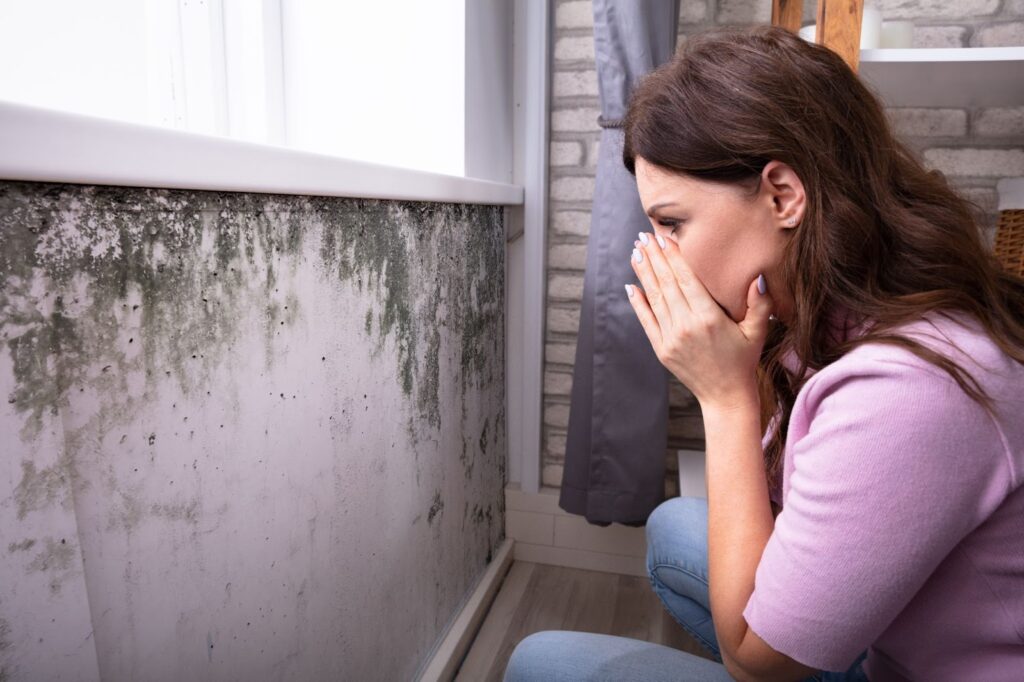
- Controlling mold growth
Maintaining a dry, pristine environment works wonders in keeping mold infestation and spore levels at bay. Moisture management is the name of the game. To really handle mold, your first step is tackling any pesky moisture issues lurking around. Mold spores are equal opportunity settlers, waiting for a damp surface to call home.
Start by giving any moisture-prone areas, like sinks, washing machines, and toilets, a good scrub down and dry-off. Next, fix plumbing and roof leaks quickly and examine them regularly. Within 24 hours, dry off any water-damaged areas. For serious flooding, contact a licensed restoration specialist.
- Cleaning up water damage
Those with respiratory issues like asthma or weakened immune systems should steer clear of moldy areas and sit out the flood cleaning activities. If you’re unsure about diving into flood cleanup, it’s always wise to chat with your healthcare provider for some expert advice.
Flood cleaning is challenging and often hazardous. Before you jump in, take a moment to unearth any potential hazards lurking in your flooded abode. The professionals are often your best bet here. They will give you the lowdown on whether stepping foot in your home is safe and offer guidance on the cleanup process.
- Other issues from long-term water damage
- Pathogen contamination – Pathogen contamination occurs especially if filthy, pathogen-laden water enters the residence.
- Infestations – Many bugs are drawn to and seek out standing water.
- Ceiling damage – Long-term water damage typically harms ceilings. This might cause a ceiling to fall unexpectedly, potentially hurting everyone nearby.
- Electrical – Water damage effects also have an impact on electrical systems. Short circuits, flames, and electrocution are typical hazards. These hazards are produced by a faulty electrical system or malfunctioning electrical appliances. Following floods or other serious water damage, a qualified electrician should switch off the home’s electricity.
- New odors – Water damage causes musty odors. Some surfaces grow stinky quite quickly after being exposed to water.
Contact Black Diamond Water Damage & Restoration today
Despite your best attempts to safeguard your property from water, flooding might still inflict significant damage. The professionals at Black Diamond Water Damage & Disaster Restoration are here to assist with cleanup and total restoration.
We work relentlessly to resolve difficulties, such as flooding, fire damage, storm damage, mold treatment, sewage backup, and biohazard cleanup. Feel certain that our expert personnel will assist you in restoring your home or commercial space to the highest possible standards.
Black Diamond Water Damage & Disaster Restoration is here to assist you with all your storm damage restoration requirements. We’re prepared to act quickly and efficiently with over 20 years of catastrophic repair experience. Contact Black Diamond Restoration now to learn more!
toto slot



